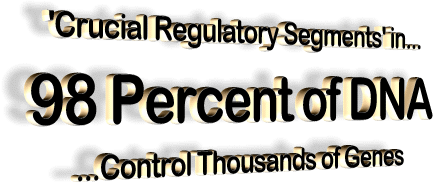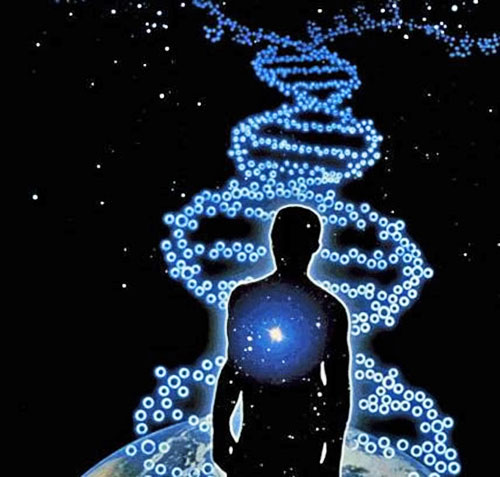|
February 24, 2017 from PreventDisease Website
Much of this part of our genome was thought to be nonfunctional evolutionary leftovers that are just along for the ride. However, hidden among this non-coding DNA are many crucial regulatory elements that control the activity of thousands of genes.
What is more, these elements play a major role in our health with their potential to trigger diseases such as cancer, heart disease, and even autism.
But a perplexing problem quickly emerged:
Biologists have suspected for years that some kind of epigenetic inheritance occurs at the cellular level.
The different kinds of cells in our bodies provide an example. Skin cells and brain cells have different forms and functions, despite having exactly the same DNA.
As part of a major ongoing effort to fully map and annotate the functional sequences of the human genome, including this silent majority, the National Institutes of Health (NIH) announced new grant funding for a nationwide project to set up five "characterization centers," including two at UC San Francisco, to study how these regulatory elements influence gene expression and, consequently, cell behavior.
The project's aim
is for scientists to use the latest technology, such as
genome editing, to gain insights
into human biology that could one day lead to treatments for complex
genetic diseases.
The discovery,
considered a major medical and scientific breakthrough, has enormous
implications for human health and consciousness because many complex
diseases appear to be caused by tiny changes in hundreds of gene
switches.
At least 80 percent of this DNA is active and needed.
Another 15-17
percent has higher functions scientists are still decoding.
Recent findings in
the journal Science (Exonic
Transcription Factor Binding Directs Codon Choice and Affects
Protein Evolution) may have big implications for how
medical experts use the genomes of patients to interpret and
diagnose diseases, researchers said.
Some codons,
which they called duons, can have two meanings. One describes
how proteins are made, and the other instructs the cell on how genes
are controlled.
Importance of Genomic Grammar
After the shortfalls of the Human Genome Project became clear, the Encyclopedia of DNA Elements (ENCODE) Project was launched in September 2003 by the National Human Genome Research Institute (NHGRI).
The goal of ENCODE is to find all the functional regions of the human genome, whether they form genes or not.
The Human Genome Project mapped the letters of the human genome, but it didn't tell us anything about the grammar:
The initiative revealed that millions of these non-coding letter sequences perform essential regulatory actions, like turning genes on or off in different types of cells.
However, while scientists have established that these regulatory sequences have important functions, they do not know what function each sequence performs, nor do they know which gene each one affects.
That is because the sequences are often located far from their target genes - in some cases millions of letters away.
What's more, many
of the sequences have different effects in different types of cells.
This process
appears to be largely controlled by specific frequencies affecting
genes.
The bottom line was:
This means that they managed for example to modulate certain frequency patterns onto a laser ray and with it influenced the DNA frequency and thus the genetic information itself.
Since the basic
structure of DNA-alkaline pairs and of language (as explained
earlier) are of the same structure, no DNA decoding is necessary.
It is entirely normal and natural for our DNA to react to frequency.
While western
researchers cut single genes from the DNA strands and insert them
elsewhere, the Russians enthusiastically worked on devices that can
influence the cellular metabolism through suitable modulated radio
and light frequencies and thus repair genetic defects.
They even captured information patterns of a particular DNA and transmitted it onto another, thus reprogramming cells to another genome. So they successfully transformed, for example, frog embryos to salamander embryos simply by transmitting the DNA information patterns!
This way the entire information was transmitted without any of the side effects or disharmonies encountered when cutting out and re-introducing single genes from the DNA.
This represents an unbelievable, world-transforming revolution and sensation! All this by simply applying vibration instead of the archaic cutting-out procedure!
This experiment
points to the immense power of wave genetics, which obviously has a
greater influence on the formation of organisms than the biochemical
processes of alkaline sequences.
The propensity for certain health conditions that you inherit from your family is not, by a long shot, the sole determinant of whether or not most folks will get sick.
Your lifestyle
choices have a significant impact, especially when it comes to
chronic illnesses such as heart disease.
Epigenetics emerges as an important mechanism underlying this phenomenon. Epigenetics is the phenomena whereby genetically identical cells express their genes differently, resulting in different physical traits.
Researchers from the Boston University Cancer Center published two articles about this in Anticancer Research and Epigenomics.
Increasingly,
biologists are finding that non-genetic variation acquired during
the life of an organism can sometimes be passed on to offspring - a
phenomenon known as
epigenetic inheritance.
Cellular Barcodes Reveal Regulatory Function
New technology has made identifying the function and targets of regulatory sequences much easier.
Scientists can now manipulate cells to obtain more information about their DNA, and, thanks to high-throughput screening, they can do so in large batches, testing thousands of sequences in one experiment instead of one by one.
Nadav Ahituv, PhD, and Yin Shen, PhD. are both using innovative techniques to study enhancers, which play a fundamental role in gene expression.
Every cell in the human body contains the same DNA. What determines whether a cell is a skin cell or a brain cell or a heart cell is which genes are turned on and off.
Enhancers are the secret switches that turn on cell-type specific genes.
Deleting Sequences to Understand Their Role
Shen, an assistant professor in the Department of Neurology and the Institute for Human Genetics, is taking a different approach to characterize the function of regulatory sequences.
In collaboration with her former mentor at the Ludwig Institute for Cancer Research and UC San Diego, Bing Ren, PhD, she developed a high-throughput CRISPR-Cas9 screening method to test the function of non-coding sequences.
Now, Shen and Ren are using this approach to identify not only which sequences have regulatory functions, but also which genes they affect.
Shen will use CRISPR to edit tens of thousands of regulatory sequences in a large pool of cells and track the effects of the edits on a set of 60 pairs of genes that commonly co-express.
For this work, each cell will be programmed to reflect two fluorescent colors - one for each gene - when a pair of genes is turned on. If the light in a cell goes out, the scientists will know that its target gene has been affected by one of the CRISPR-based sequence edits.
The final step is to sequence each cell's DNA to determine which regulatory sequence edit caused the change in gene expression.
By monitoring the colors of co-expressed genes, Shen will reveal the complex relationship between numerous functional sequences and multiple genes, which was beyond the scope of traditional sequencing techniques.
This would not only help illuminate the rest of the unknown genome, it could also reveal new treatment targets for complex genetic diseases.
As the price for sequencing a person's genome has dropped significantly, there is talk about using precision medicine to cure many serious diseases.
However, the hurdle of how to interpret mutations in non-coding DNA remains.
|


